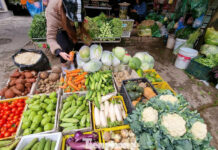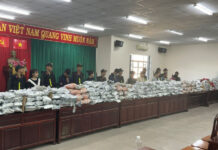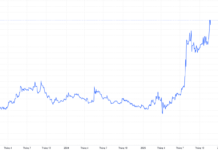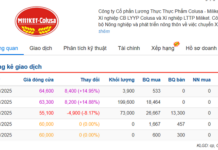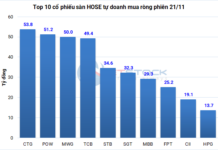Vegetable Price Surge
Ngoc Loan, a resident of Thanh Xuan, Hanoi, shares that her grocery budget for a family of five has never been as strained as it is now, despite no significant change in the quantity of food purchased.
“100,000 VND now only buys enough vegetables for about two days. A small bunch of morning glory costs 25,000 VND, requiring two bunches per meal if stir-fried; two small tomatoes for soup cost 18,000 VND. Even green onions are expensive, no longer affordable at a few thousand VND as before,” Loan remarks.
Observations from local markets in Hanoi, such as Nhan Chinh, Nga Tu So, and Yen Hoa, reveal that morning glory prices have risen from 8,000-10,000 VND to 20,000-30,000 VND per bunch; various types of cabbage range from 40,000 to 50,000 VND per kg; and su su and cucumbers are scarce, with prices doubling in some areas. Tomatoes now cost 55,000-60,000 VND per kg. Many homemakers note that prices have doubled or even tripled since the recent floods. Even seasoning vegetables, typically considered secondary, have become a significant expense for shoppers.
At O Cho Dua Market, vendor Bui Thi Thu mentions that the supply from wholesalers has noticeably decreased, while procurement costs have surged. The quality of vegetables has deteriorated, with more damaged or spoiled portions to discard.
“Despite higher selling prices, my profit hasn’t increased. Customers now buy green onions by weight, not by handfuls for a few thousand VND. I can’t sell anything for less than 5,000 VND,” she explains.
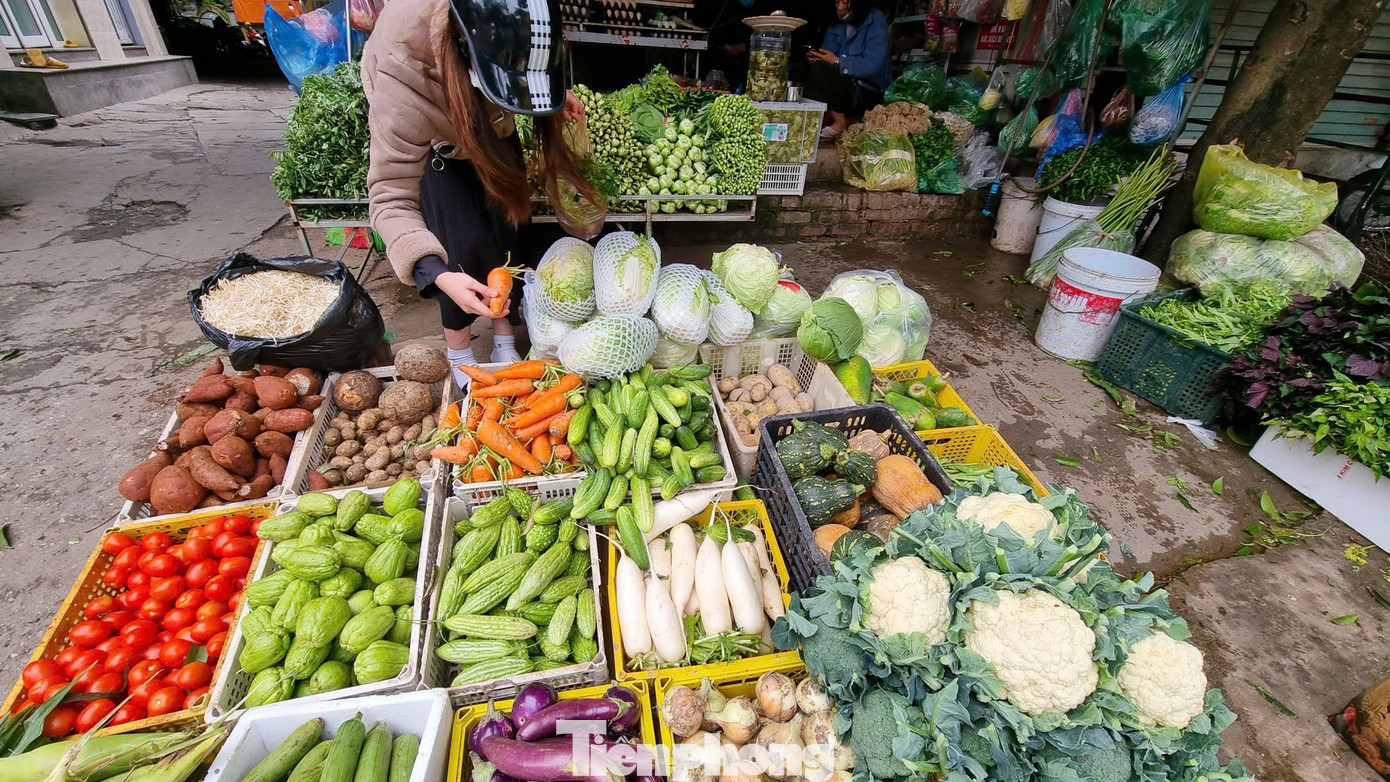
Vegetable prices have been soaring in recent times.
Meanwhile, prices for meat, seafood, and poultry have remained relatively stable. As a result, the cost of vegetables in each meal has nearly equaled, or even surpassed, the cost of meat and fish—a rare paradox on Vietnamese tables.
According to vendors and cooperatives, the rapid rise in vegetable prices is attributed to the recent prolonged rains and floods. In Van Duc Cooperative, a major vegetable supplier to Hanoi with approximately 200 hectares of cultivation, the daily output for supermarkets and canteens has dropped from 70-80 tons to 40-50 tons due to flood damage. Leafy vegetables and seasoning herbs have suffered significant losses, with stunted growth and sharply reduced yields. Supermarkets and distribution centers are facing similar pressures.
Causes
A representative from MM Mega Market explains that heavy rains caused landslides and road closures in Da Lat and Lam Dong, disrupting the transport of vegetables from this “vegetable capital” to the Central and Northern regions.
Key routes such as Nha Trang – Quy Nhon – Phu Yen experienced flooding in multiple areas, forcing dozens of trucks carrying vegetables, dry goods, and frozen products to await traffic control instructions as waters recede. Central warehouses, including the Bac Ninh facility, are under constant strain due to limited supply.
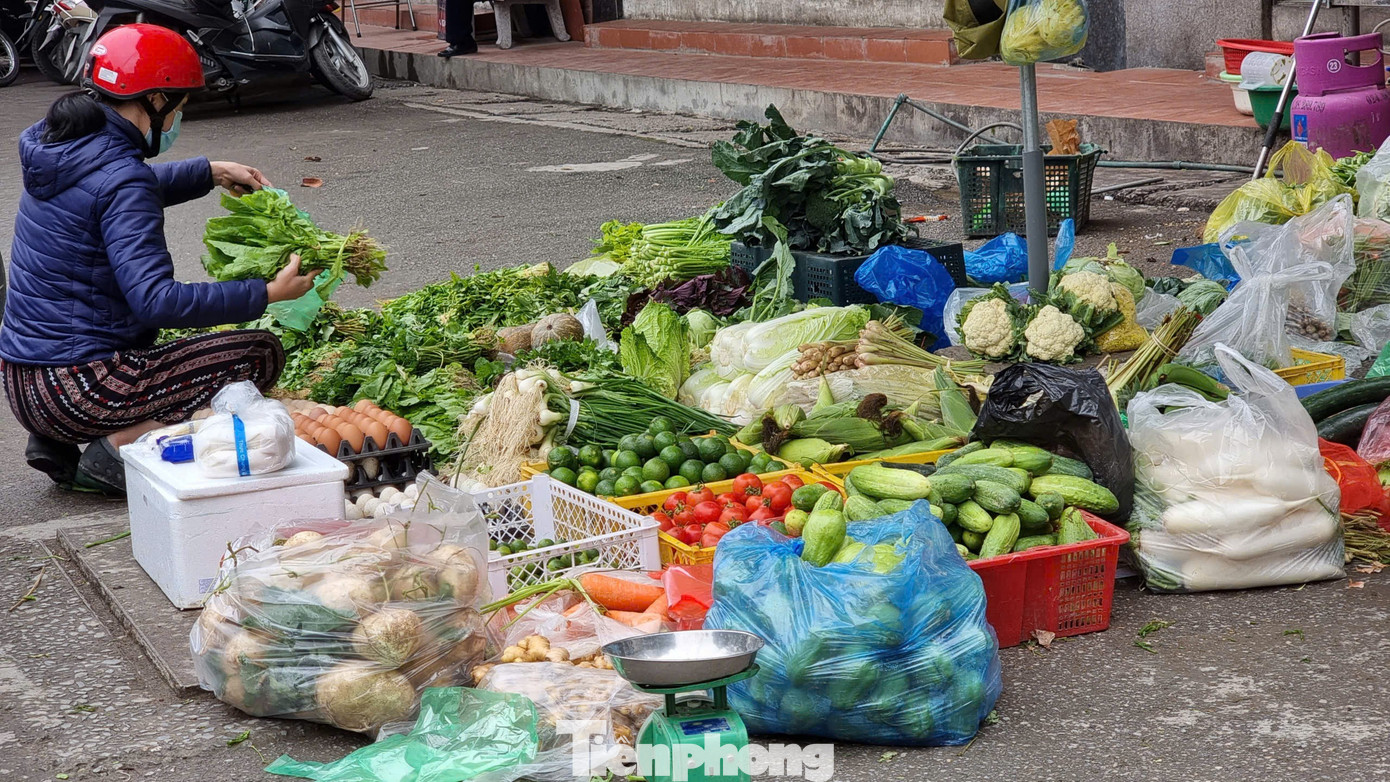
Consumers are forced to “tighten their belts,” carefully considering vegetable purchases.
The Hanoi Department of Agriculture and Rural Development (DARD) reports that since early September, green vegetable prices began rising due to reduced yields caused by adverse weather. Heavy rains in late October flooded hundreds of hectares of crops, drastically cutting supply and causing local prices to skyrocket. Farmgate prices reached 35,000-40,000 VND per kg for tomatoes, 25,000 VND per kg for Chinese cabbage, 35,000 VND per kg for chard, and 50,000 VND per kg for green onions—far exceeding normal rates.
Hanoi DARD is collaborating with local authorities and cooperatives to accelerate winter crop production and expand short-cycle vegetable cultivation to offset shortages. Efforts are also underway to strengthen connections with major growing regions, ensuring a stable supply for the capital.
“Vegetable prices will only stabilize when three conditions are met: weather returns to normal; flooded areas recover; and winter crop supplies, especially short-cycle vegetables, reach peak harvest. Typically, it takes at least 3-4 weeks from production recovery to abundant market supply.
Many local cooperatives are urgently sowing additional crops, replanting, and shifting some areas to quick-harvest vegetables to meet year-end and Tet demands. Distributors are also diversifying sources by increasing imports from less flood-affected regions and importing long-shelf-life vegetables,” states a DARD representative.
China’s Leading Railway Conglomerate Eyes $2.8 Billion Van Cao – Hoa Lac Metro Project, Set to Break Ground on December 19th
The Vice Chairman of the Board of CRRC Dalian expressed keen interest in collaborating on projects within Hanoi, particularly the Hanoi Metro Line 5, connecting Van Cao to Hoa Lac.
Hanoi Approves 40-50m Wide Road Project Connecting Vo Nguyen Giap Street to Soc Son Satellite Urban Area
The Hanoi People’s Committee has approved the second phase of the road connecting Vo Nguyen Giap and Soc Son, spanning over 4 kilometers. This project aims to complete the northern transportation axis and drive infrastructure development for the Soc Son satellite urban area.


